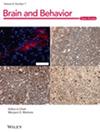Normative Modeling Reveals Age-Atypical Cortical Thickness Differences Between Hepatic Steatosis and Fibrosis in Non-Alcoholic Fatty Liver Disease
Abstract
Objectives:
To investigate individual variations and outliers in cortical thickness among non-alcoholic fatty liver disease (NAFLD) patients, ranging from hepatic steatosis to fibrosis, using neuroanatomical normative modeling.
Materials and Methods:
A cross-sectional study with 2637 health check-up subjects was conducted. Among NAFLD patients, hepatic steatosis (n = 556) and fibrosis (n = 57) were determined by hepatic steatosis index and fibrosis-4 score, respectively. Cortical thickness in 148 different brain regions was assessed using T1-weighted MRI scans. A publicly available neuroanatomical normative model analyzed cortical thickness distributions with data from around 58,000 participants. The hierarchical Bayesian regression was used to estimate cortical thickness deviation for each region, taking age, sex, and sites into account. On the basis of a normal adaptation set, Z-scores below −1.96 or above +1.96 per region were classified as outliers. The total outlier count (tOC) was then calculated to quantify regional heterogeneity. Mass univariate analysis was conducted to compare steatosis and fibrosis groups, and the spatial patterns of regional heterogeneity were qualitatively analyzed.
Results:
Patients with hepatic fibrosis had a higher number of positive outlier regions (mean 6.3 ± 10.3) than hepatic steatosis (mean 4.2 ± 6.2, p = 0.02). Mass univariate group difference testing of 148 brain regions revealed patients with hepatic fibrosis had 6 cortical areas thicker than hepatic steatosis. Two groups showed shared regional heterogeneity in the temporal cortex.
Conclusion:
Distinct brain atrophy patterns were observed in NAFLD patients compared to the normal group, with more frequent temporal cortex outliers in both hepatic steatosis and fibrosis. Hepatic fibrosis showed slightly increased cortical thickness relative to steatosis.


 求助内容:
求助内容: 应助结果提醒方式:
应助结果提醒方式:


